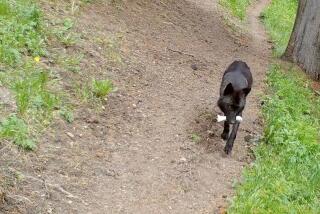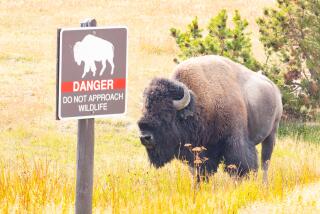And now a late score from Yellowstone: Bison, 4,230. Elk, 3,915.

- Share via
The new numbers are in from Yellowstone National Park, and they’re good news for bison, not so good for elk.
In a new report measuring “vital signs” among Yellowstone’s natural and cultural resources, many animal populations were up or stable. Among them: bison, grizzly bears and bighorn sheep. Pronghorn are at their highest point in more than 20 years, the report says.
Elk, however, are down to their lowest numbers in decades, in part because of predation from a gray wolf population that was reintroduced in 1995. Yet the gray wolf population also has been slipping since 2007.
In addition, the number of trumpeter swans has been dwindling over the last 25 years.
The new report gathered from the most recently available statistics from multiple sources. It includes these estimated animal populations:
— 22 breeding pairs of bald eagles.
— 378 bighorn sheep.
— 3,915 elk.
— 243 gray wolves in Wyoming, 83 of them within park boundaries.
— 4,230 bison in summer. (This is up from fewer than 50 remaining bison in 1900.)
— 610 grizzly bears in greater Yellowstone, including 150 within the park.
— 351 pronghorn in spring.
— 16 trumpeter swans.
— Hotels, cabins and campgrounds hold about 14,300 human beings each night during summer months. When day-tripping visitors are included, the average summer-day visitation of the park in 2012 was 28,656.
More to Read
Sign up for The Wild
We’ll help you find the best places to hike, bike and run, as well as the perfect silent spots for meditation and yoga.
You may occasionally receive promotional content from the Los Angeles Times.







